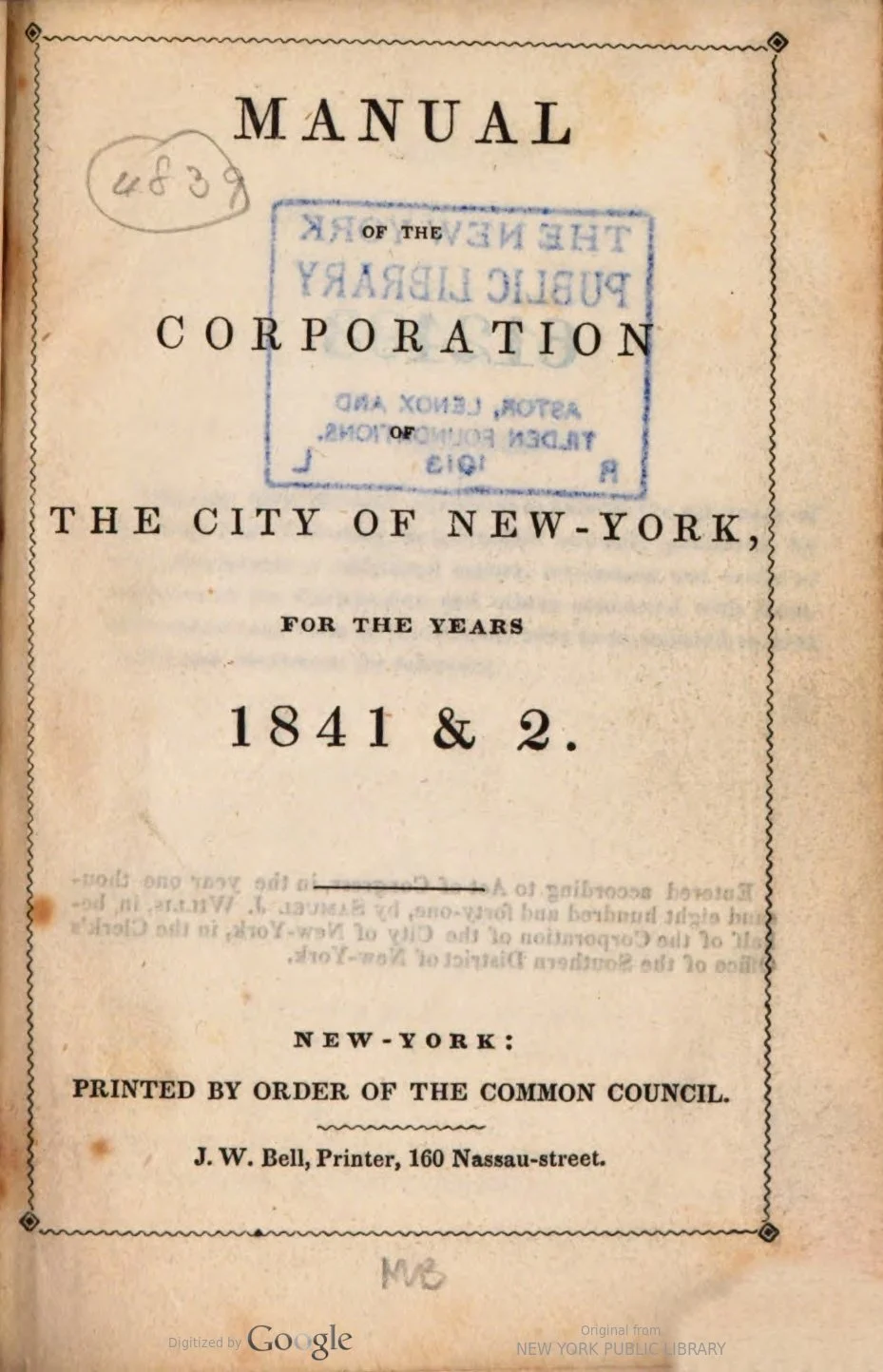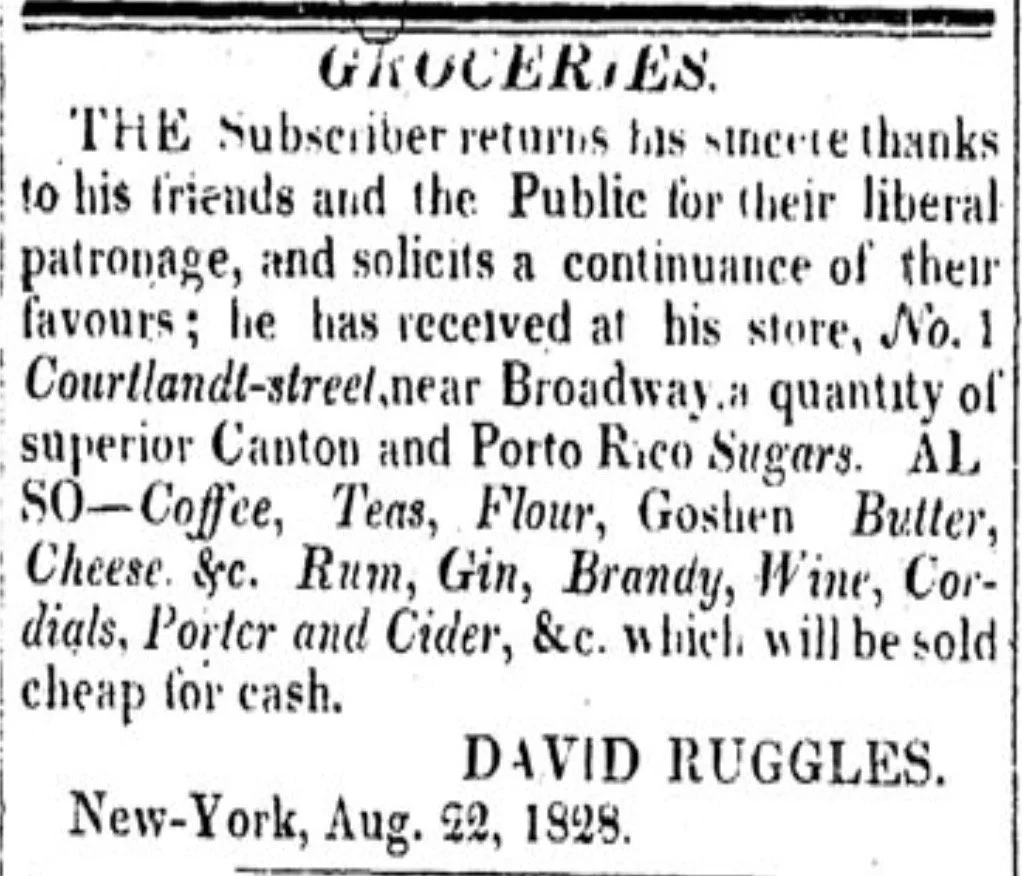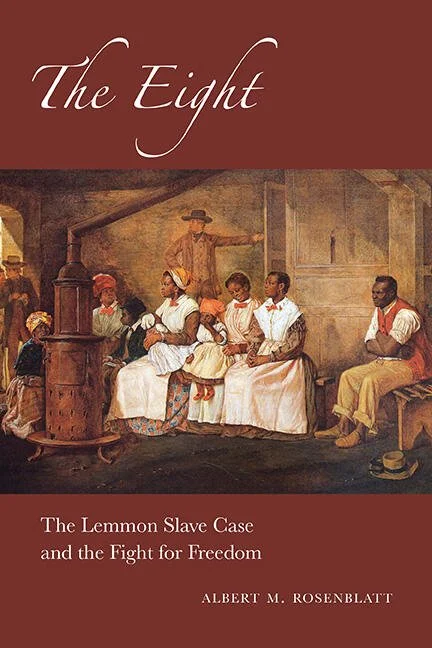“Our Brooklyn Correspondent”: William J. Wilson Writes the City
By Britt Rusert
William J. Wilson may very well have been New York’s first Black culture critic. A self-stylized flâneur, cultural aesthete, and frequent contributor to Black periodicals throughout the 1840s and 50s, he wrote under the name “Ethiop” and as “Brooklyn Correspondent” for Frederick Douglass’ Paper. In these columns, he provided readers across the nation with on-the-ground reports of New York’s people, places, and happenings based on his frequent “ramblings” around the city. Wilson was particularly interested in the sights and sounds of Broadway as it emerged as a hub of culture, entertainment, and conspicuous consumption in the middle of the century. Wilson would make his own contribution to the city’s cultural scene in 1859 with his publication of the Afric-American Picture Gallery, an experimental text that imagines the first museum of Black Art in the United States
Read MoreFree from the Stain: New York’s Free Produce Stores
By Charline Jao
American proponents of free produce saw clearly the connection between commercial consumption and the institution of slavery, seeking to overthrow what Frances Harper called slavery’s “commercial throne.” Not only did they refuse to buy items that came from southern plantations, they also sought to create new networks of trade, labor, and production. Ruggles, for instance, did not only secure “free” butter from Goshen, New York for his customers, he also employed formerly enslaved men like Samuel Ringgold Ward and Isaiah Harper Ward. Advocates of free produce set out on expeditions to find alternatives to sugar, reached out to farmers and merchants, did speaking tours in England, and opened stores where they could proudly state – as Elizabeth Kent in Pennsylvania did – that they had “EVERYTHING FOR SALE EXCEPTS PRINCIPLES!!”
Read MoreThe Eight: An Interview with Andrew M. Rosenblatt
Albert M. Rosenblatt, interviewed by Evan Turiano
The Eight tells the story of the Lemmon slave case, a dramatic legal battle over the freedom of eight enslaved people who were brought to New York City while sailing from Virginia to Texas, at which point New York abolitionists initiated a freedom suit on their behalf. The eight-year legal saga that followed reflected escalating political tensions over the fate of American slavery and highlighted the legal contradictions that complicated a half-slave, half-free nation.
Read MoreGrand Emporium, Mercantile Monster: The Antebellum South’s Love-Hate Affair with New York City
Review by Emily Holloway
In 1788… a mere 62 bales were shipped to Europe via New York, compared to 153,757 less than thirty years later (2)….Despite the lengthy and arduous journey, tourists, planters, and writers flocked to the city... During their visits, these elite southerners – many of whom owned cotton plantations -- were rubbing elbows with New York’s mercantile and financial leaders,… The close social ties that developed between these classes built on their intimate financial connections through cotton… southern writers remarked critically on the vast economic inequality on display throughout the rapidly growing city, a characteristic they frequently tied to the machinations of industrial capitalism. This critique was frequently deployed as a reaction to northern abolitionist sentiments, a false equivalence between the ravages of industrial “wage slavery” and the racist violence of plantation slavery.
Read MoreSojourner Truth: How the Enslaved Woman of a Dutch-New York Family Became an Icon of America’s Black Liberation Movement
By Jerome Dewulf
…[A]ssisting in the recruitment of Black troops for the Union Army… she had an audience with President Lincoln in 1864… in Washington, D.C., Truth challenged the de facto segregation in the city’s transportation system by insisting on her right to take a seat on streetcars. With her decision to use civil disobedience as a strategy to challenge segregation in public transportation, Truth anticipated Rosa Parks by almost a century. However, Truth could also be an uncomfortable voice within her own community. For instance, when Douglass defended the use of violence in the fight for racial justice at a meeting in 1852, she interrupted him with the words “Frederick, is God gone?” and, in 1867, she provocatively stated that “if colored men get their rights, and not colored women theirs... the colored men will be masters over the women, and it will be just as bad as it was before.”
Read MoreThe Rise and Fall of Protestant Brooklyn: An American Story
Reviewed by Jon Butler
Between the Civil War and 1900, "old" Brooklyn both prospered and declined. Real estate developers and the new Brooklyn Bridge swelled Brooklyn's tony neighborhoods with middling and upper-class commuters to Manhattan….The New York Times may have been condescending when it labelled Brooklyn "that moral suburb" before the Brooklyn Bridge dedication, as Blumin and Altschuler put it. But it hadn't missed the Protestants' aim.
Read MoreSodomites and Gender Transgressors In 1840s New York
Marc Stein, interviewed by Katie Uva
We have ample evidence of queer acts and desires, but not gay, lesbian, bisexual, or trans identities and communities, in colonial America or the United States before the late 1800s. That’s part of what makes this set of documents from the 1840s so interesting and so significant — they might allow us to push back the clock on when such identities and communities emerged in the United States…. these sources capture widespread cultural anxieties about the genders and sexualities of young white men and the new pleasures and dangers of life in urban America.
Read MoreBefore Central Park
Reviewed by Kara Murphy Schlichting
Before Central Park is Sara Cedar Miller’s fourth publication about New York City’s famous greensward. Miller is historian emerita and, since 1984, a photographer for the Central Park Conservancy. Before Central Park is distinctive in its combination of Miller’s photography, her expert understanding of the park’s geography and archeology, and her meticulous real estate history of parkland from the 17th through the 19th centuries.
Read More







